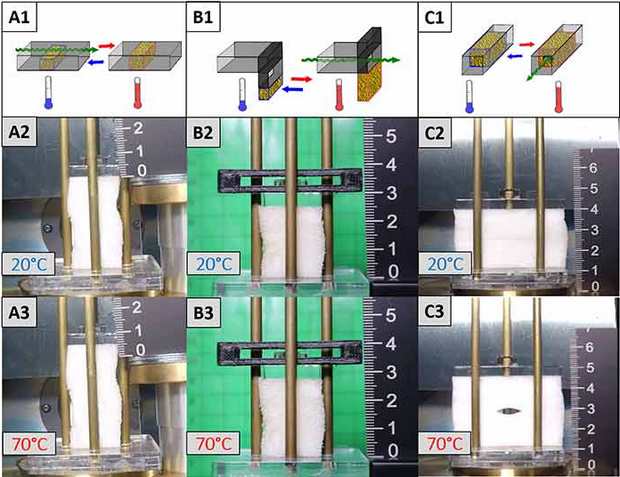Cooling using programmable foam

Scientists at a German research organisation are looking to cool buildings using a “programmable” insulation foam that can change shape depending on the temperature.
Programmable materials are materials or material compositions, which are structured such that their properties can be specifically controlled and reversibly changed. Complex and locally different functions can be programmed into these materials. Depending on the application and situation, the material then adopts different conditions and material properties initiated by external triggers.
The innovative material being developed by the Fraunhofer CPM can be programmed to control heat transition and save up to 40% of the energy used to cool single-family homes.
The foam is able to open and close its pores depending on the temperature. This is in contrast to conventional shape-memory foams which are only able to change their shape once.
During hot weather when the sun is beating down, foam elements will expand, thereby sealing the ventilation slots between the building wall and rainscreen cladding to prevent the building from heating up. At night, the foam contracts and opens the ventilation slots, allowing fresh air to circulate behind the cladding and cool the house effectively.
